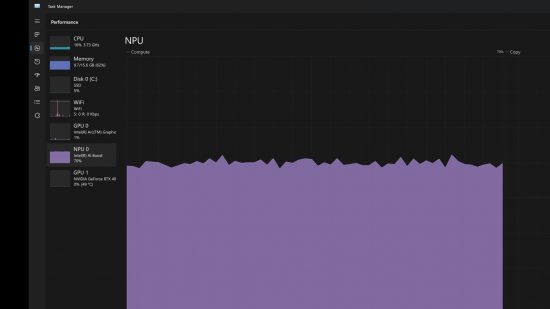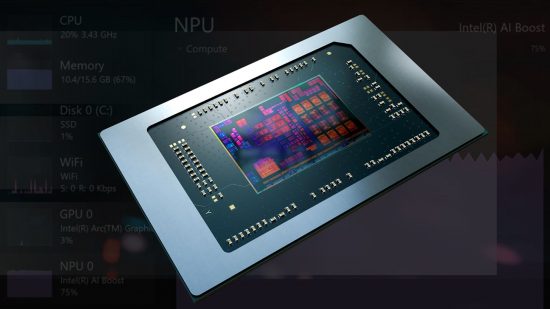Like it or not, AI and AI-accelerating processors are here to stay, and Microsoft has embraced that fact by recently adding a new section to Task Manager that allows you to monitor AI chip usage, just as you can for CPU and GPU load. Up until now, though, this only supported Intel’s NPUs, but AMD has just announced it’s been working with Microsoft to include AMD AI monitoring in an upcoming Windows update.
Neural processing units are dedicated processors included in both CPUs and GPUs (from AMD, Intel, and Nvidia) that allow AI tasks to be offloaded from other parts of the chips to allow for faster processing and reduced power consumption. Not all the best CPU options include NPUs yet, but AI cores are now commonplace in the best graphics card models available.
Intel has included NPUs on its recently-launched Intel Core Ultra laptop chips, which are now widely available in products such as the Acer Swift X 14, Asus Zephyrus G16 and G14, and Lenovo Legion Pro 7i laptops, as well as other mobile products such as the MSI Claw. However, the only AMD products to thus far include NPUs are its Ryzen 8040 Series mobile processors. They’re also arriving in several laptops right now, though availability is currently far less widespread.
To enable the new AI monitoring, AMD has been working with Microsoft to enable MCDM (Microsoft Compute Driver Model) infrastructure on its 8040 chips. According to AMD, “MCDM enables NPUs to make use of the existing GPU device management infrastructure, including scheduling, power management, memory management, and performance debugging with tools such as the Task Manager.”

The upshot will be that Task Manager (and other apps that access the MCDM interface) will be able to show the usage of AMD AI accelerators on your system (as it can for intel systems like shown above). While for most end users this will mean little more than you being able to see some pretty usage graphs, there’s the potential for users to troubleshoot issues, such as the accelerators not being used properly, or to seek out performance or power consumption issues by seeing whether certain tasks are putting too much load on the NPUs. You might also be able to tell if there are mysterious accelerated background AI processes doing something dodgy on your system.
However, one potential complication is that both CPUs and GPUs can include NPUs. With Task Manager currently only tracking CPU NPU usage, it’s leaving a whole load of tracking data out of its display, if programs are taking advantage of GPU NPU acceleration, meaning the overall NPU load picture won’t be clear.
AMD hasn’t stated when we can expect a new version of Windows to roll out with this update, but we expect it to arrive soon. The march to full submission to our AI overlords has taken another step forward… If that future doesn’t fill you with fun thoughts, and you want to build a gaming PC, you can always check out our best gaming CPU guide for recommendations on which thoroughly non-AI-accelerated chip to choose.
